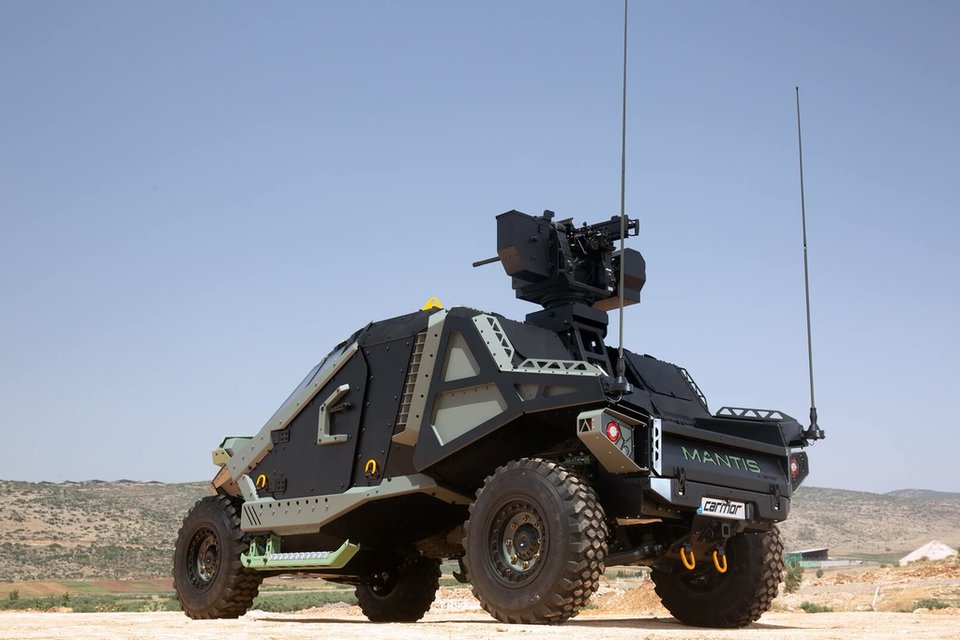Electronic Warfare
Countermeasure development in the age of AI
Brian Tottingham, technical sales manager for mission data services at MASS, explains how artificial intelligence (AI) could help countermeasure development enter a new era, looking at research and development efficiencies, the importance of data accuracy, as well as the challenges to adoption.

// Image courtesy of
Artificial intelligence has been adopted across a diverse range of industries, including manufacturing and retail, delivering process efficiencies through automation and enabling faster decision-making. The defence sector lags curiously behind, however, despite there being a significant opportunity to advance operational effectiveness and improve countermeasures through the adoption of AI.
Support for countermeasure development
One of the most important benefits that AI offers to countermeasure development is the ability to support electronic warfare (EW) analysis.
When used in conjunction with simulation software, the technology has the potential to reduce costs and streamline countermeasure development processes so that expensive and time-consuming sea, field or flight trials are either performed quicker or targeted more effectively. Allowing multiple factors to be modified at the same time within a single engagement, AI and smart analysis tools could reduce time and costs traditionally associated with effective countermeasure development.
“The automation of the tools required for this could also be used by peers nationwide in various organisations, helping to open up the siloed approach to EW that the industry has today.”
The use of these tools could in turn enable multi-domain (RF and/or IR), multi-environment (air, land and/or sea), multi-platform and multi-threat engagements to be simulated and the next generation of countermeasure tactics to be developed.
The automation of the tools required for this could also be used by peers nationwide in various organisations, helping to open up the siloed approach to EW that the industry has today.
Furthermore, by employing common tools throughout the industry, analysts would no longer need to develop their own unverified and un-validated tools to see how a countermeasure performs. This would allow tasks to benefit from development and implementation of standard analysis methods produced by analysis experts, rather than countermeasure or threat systems experts.

Lorem ipsum dolor sit amet, consectetur adipiscing elit.
Enhanced data accuracy
In addition to development efficiencies, AI could also help prevent errors and improve data accuracy.
Through the use of AI, threat data could be filtered so that only realistic data is employed within the data management system. Where ‘holes’ exist in the intelligence mission data physics ‘first principles’ can be used to supplement the data.
Besides, knowing what data is missing would enable data mining to source all data pertinent to the engagement, effectively reducing the analytical burden and reliance on intelligence agencies. This would also support the standardisation of the sector, with EW information from open-source intelligence automatically obtained and stored.
A key benefit for the employment of AI within data management, data mining and filtering is that it significantly reduces the risk of human error, wasted development time as well as the development of ineffective countermeasures.

Lorem ipsum dolor sit amet, consectetur adipiscing elit.
New skillsets
As with any new or emerging technology, the use of AI requires militaries and businesses to invest in physical equipment and software along with uniquely qualified personnel. Not only does this mean a new focus on recruitment and training but, also on the programming of labour-intensive tasks into machine learning algorithms.
The initial financial investment, along with the time needed to define the process and its relative data taxonomy, are currently the initial challenges that the industry faces. However, when considering the benefits that the technology can deliver, significant steps would need to be taken to overcome these early adoption challenges.
Widespread adoption of AI in the EW domain could see technological development in the industry increase more rapidly than ever before. With experts such as MASS laying the cornerstones of an evolution toward an AI solution, the industry is in a firm position to overcome the barriers to adoption and drive the sector forwards.

Lorem ipsum dolor sit amet, consectetur adipiscing elit.